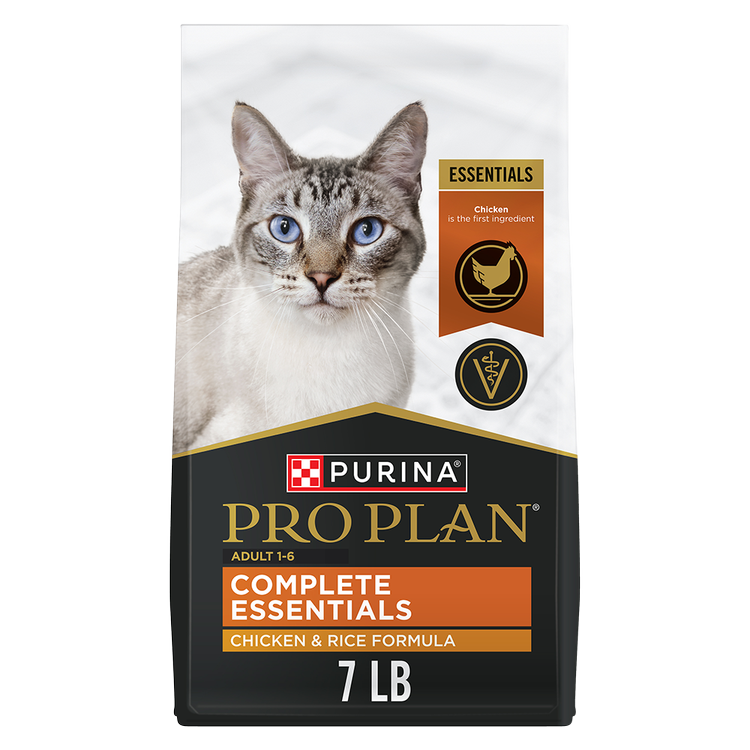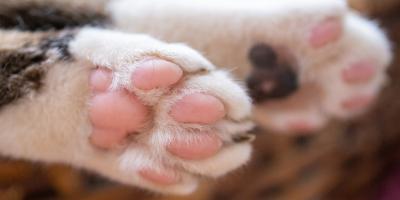Cat Fleas: Causes, Prevention and Treatment


Cat fleas are very normal and they’re the most common reason for a cat to develop a skin condition.
Introduction to Cat Fleas
The most common type of flea found on cats is the cat flea (Ctenocephalides felis), but dog and fleas found on small mammals like rabbits can also show an interest in your cat! The saliva from a flea bite can cause some cats to develop flea-allergic dermatitis leading to excessive scratching and skin lesions. As if fleas weren’t pesky enough, they can also provide a thriving environment for certain types of tapeworm, and heavy infestations of fleas can cause anemia particularly in kittens.
However, there’s no need to worry, as there are a number of different cat flea prevention options for you to consider.
What Are Cat Fleas?
Cats are excellent groomers, so it might be tough to imagine your preened pet catching parasites! The most obvious sign that your cat has fleas is persistent scratching, or sometimes over-grooming, they may also have scabs and red, sore areas on their skin. Regularly grooming your cat won’t necessarily prevent parasites, but it will give you the chance to check their fur for any signs of unwanted visitors, so that you can quickly seek treatment.
What Do Cat Fleas Look Like?
Cat fleas are dark brown and 1-2mm long. You might spot them in your carpet or notice tiny black specks of flea waste in your cat’s fur during combing. A good way to test for fleas is to put these black specks onto some damp tissue paper – if it is from a flea, the specks will turn red because of the digested blood they contain.
Fleas thrive in warm, humid environments, which means late summer is the peak flea season for cats. However, central heating in the winter means that flea prevention is a must all year round.
How to Tell if Your Cat Has Fleas
Finding it hard to tell whether or not your cat has caught this tiny parasite? Here are the most common signs of cat fleas to watch out for:
- Excessive scratching
- Spots showing hair loss
- Skin irritation
- Excessive grooming
- Black speck in the cat’s fur or bedding
- Lethargy and pale gums caused by flea-related anemia with severe disease
How Do Cats Get Fleas?
Roaming outdoors all day long seems like the sure recipe for bringing home a family of fleas. But even if your feline is a homebody, parasites such as fleas might have plenty of occasions to land into the luscious fur of your indoor cat. Here are some ways cats can catch fleas:
- Getting out of the house. Even a quick trip to the vet is enough time to allow a pesky flea to find its way to your indoor pet. Places like the vet’s office or cat boarding facilities are visited by many other fellow cats. If one of them already has fleas, there are chances that some will be left behind, waiting for another pet to show up.
- Other pets in the household. If your cat is sharing their space with other animals, consider that maybe other pets have brought in these tiny insects, and your cat was their next perfect target.
- Rodents in the garden. Cats love their little mouse-hunting missions. But if one of their victims is the host of a few pairs of fleas, they can easily jump ship and infect your cat instead.
- Moving to a new house. Oftentimes moving into a new home requires a thorough cleaning to ensure the entire space is free of fleas. If you’ve recently moved to a new home with your cat, make sure to thoroughly clean the place again, or even contact experts in flea control for a professional service if you think it’s necessary.
Types of Flea Prevention for Cats
If you think your cat has fleas, speak to your vet for information on suitable cat flea treatments – and make sure you check with them before using any over-the-counter product.
Never use a dog flea product on your cat as the active ingredient, permethrin, can be extremely toxic to your cat. If you have dogs as well as cats, don’t treat your dogs with any flea treatment products containing this chemical as cats can be exposed to it by contact. If your cat has a reaction to a cat flea product, contact your veterinarian or seek veterinary care. When you’re deciding how to get rid of cat fleas, remember that you also need to eliminate the fleas from the pet’s environment. Topical or oral preventatives are also able eliminate the flea populations in the environment by killing new fleas that jump on your cat and/or stopping the reproduction of the fleas. Home treatments are also available to eliminate flea populations in addition to treatment of your cat. These flea prevention steps are key to keeping a flea free home.
Remember, it’s very important you speak to your vet before treating your cat, particularly if they’re pregnant or feeding new kittens. Some off-the-shelf products are less effective than prescribed products, and they may fail to eliminate flea infestations. Your vet will be able to advise on the best cat flea treatment for your cat.
Best Flea Prevention for Cats
There are a wide variety of cat flea treatments available that can be applied directly to your cat’s skin and fur to target the fleas where they live on your pet.
- Flea powder for cats. Flea powders for cats are a rather old-fashioned and messy way of treating cat fleas, as the powder needs to remain on your cat’s coat to be effective and can cause illness if it’s swallowed or inhaled.
- Flea spray for cats. Flea sprays for cats are also used less frequently than they used to, thanks mainly to the invention of the ‘spot-on’ treatments. The noise of the spray can also upset nervous cats. However, a pump action spray containing an ingredient called fipronil can be used on very young kittens, which aren’t allowed to use spot-on treatments.
- Cat flea collars. Over the counter cat flea collars aren’t usually very effective as they have a limited range – that is, they only treat the area around the neck – and can also cause hair loss or irritation. However, there is a new generation of cat flea collars – available from your vet – which are much kinder to your cat’s skin and fur, and work by dispersing the active ingredient through the body rather than simply sitting on your cat’s neck. Remember, all cat flea collars must have a quick-release mechanism. Otherwise, your cat can get easily tangled.
- Spot-on flea treatments for cats. Spot-on flea treatments for cats are the simplest form of cat flea prevention. They usually consist of a small vial of liquid which should be applied to the back of your cat’s neck, killing fleas and sometimes the development of eggs. There are several brands available, so talk to your vet to find the best one for your cat.
- Oral flea medication for cats. Cat fleas can also be treated orally through tablets which are absorbed by the cat and then kill and/or sterilize fleas when they bite.
- Flea injections for cats. Cats can have an injection in order to prevent flea eggs, but you’ll usually have to use an oral or topical treatment at the same time to totally get rid of the existing cat fleas.
How to Get Rid of Cat Fleas in the House
Some of the cat flea prevention methods mentioned above are helpful in treating your house as well, as they prevent fleas from laying eggs, or prevent the eggs from developing. However, there are many household sprays available that can be used on carpets and furnishings.
Always follow the manufacturer’s instructions, which will usually tell you to vacuum your carpets to bring cat fleas and eggs to the surface before thoroughly spraying your carpet, and then vacuuming again. Always spray the vacuum cleaner with flea spray and throw away any vacuum bags, so that fleas can’t continue to develop inside.
Don’t use sprays near fish tanks and always make sure your pets are kept away from treated areas until they’ve been well-ventilated. Unfortunately, very severe infestations in a house may require pest control treatment.
Natural Flea Treatment for Cats
Some cat flea treatment products contain natural ingredients such as oil of citronella and eucalyptus. These products usually haven’t undergone any stringent safety tests, so they may not be effective or could potentially affect your cat’s health. It’s always best to speak to your vet before using any product.
For more expert tips on keeping your cat healthy, explore our other cat health articles.
Related articles

Be Rewarded for Your Purina Purchases
Earn and redeem points for Purina products with myPurina app.






